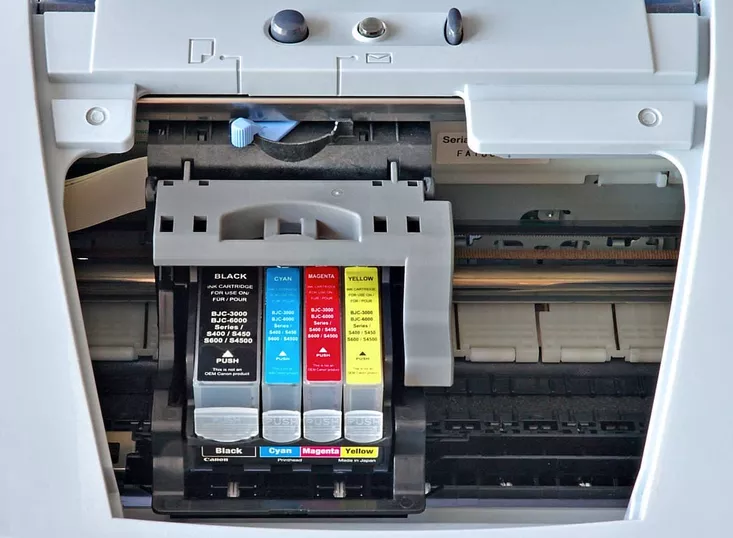Jul 26, 2023

Printers are essential office supplies for every office, and many households also have a printer at home. Despite the increasing digitalization, printers still have a significant demand in Hong Kong. This article will introduce various types of printers.
Printers can primarily be divided into color and monochrome (black and white) printers, with the main difference being the color output. When it comes to printing technology, there are two main types available on the market, which is the first thing to consider when buying a printer: Inkjet Printers and Laser Printers.
Inkjet printers can be further classified into two types based on the inkjet method: Thermal Bubble Inkjet Printers and Piezoelectric Inkjet Printers.
Thermal Bubble Inkjet Printers
Thermal bubble technology involves heating a resistor to vaporize a portion of the ink in the print head, forming a bubble that forces the ink out of the nozzle onto the media, creating images or characters. Because the electrodes in the print head are susceptible to electrolysis and corrosion, the ink cartridges are usually replaced along with the print head. HP, Canon, and Lexmark primarily sell thermal bubble inkjet printers.
Piezoelectric Inkjet Printers
Piezoelectric inkjet technology uses tiny piezoelectric ceramics placed near the nozzles in the print head. When a voltage is applied, the ceramics deform, forcing the ink out of the nozzles and onto the media. The print head’s structure allows for effective control of ink droplet size and usage, resulting in higher printing precision and quality. Due to cost considerations, the ink cartridge and print head are usually handled separately.
Inkjet printers typically have a smaller footprint and feature an easily accessible compartment for ink replacement.
Laser printers use electrostatic copying to transfer images directly onto the photoconductor drum via a laser beam, which then transfers toner onto paper to create text or images. Unlike inkjet printers, laser printers can print the entire content at once without segmenting the printing process.
Due to the rolling mechanism in laser printers, they are generally larger, and paper is fed from bottom to top, which is different from the operation of inkjet printers.
Basic photo printers can be handled by inkjet technology, but more advanced photo printing has evolved into new technologies, such as Dye-Sublimation and Zink printers.
Dye-Sublimation Printers
Dye-sublimation photo printers use solid color ribbons that are vaporized directly into gas by heating elements, which then deposit color onto the media. Different temperatures control the color intensity, resulting in smooth images. Dye-sublimation printers offer better photo quality and are commonly used in professional photo printing, such as by digital commercial printing companies.
Zink Photo Printers
Zink, which stands for "Zero Ink," is a new photo printing technology where special paper embedded with yellow, magenta, and cyan dye crystals changes color when heated by the print head. While popular, Zink printers typically produce lower quality prints with a grayish layer on the surface, making them more suitable for fun sticker printing rather than high-quality photo output.
To meet increasing office demands, single-function printers are often insufficient, leading to the development of multifunction printers. Three-in-one printers can print, scan, and copy, while four-in-one printers add faxing capabilities.
Price: Laser printers use toner, which is more cost-effective than ink, and toner cartridges typically have a higher capacity, resulting in more pages per cartridge compared to inkjet printers.
Pri
